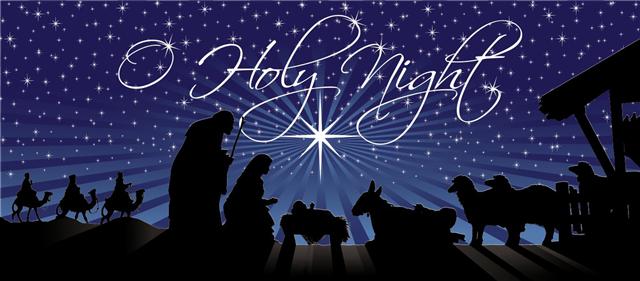Favorite Christmas songs: O Holy Night [Guest Post from @michaeljthom]
Michael Thom was working with the Campus House in Muncie when I met him some four years ago. When we first met, neither one of us had any clue that we’d be working together at the same company. Funny how things work out.
Thanks, Michael, for sharing your favorite Christmas carol!

When I stop to think of what my “favorite” Christmas Carol is, I find myself struggling to pick just one. I’m the guy who will listen to Christmas music in June, and I definitely start regularly listening to Christmas music as soon as Halloween has passed, so I’m a bit of a fanatic. There are very few Christmas songs I don’t like (hmm, maybe that’d be an interesting topic to explore on my own blog!), but many, many that I do.
O Holy Night consistently keeps coming back as one of my very favorites. Something about its triple meter lilt and its beautiful statement of the power of Christmas makes me love most every version I’ve heard recorded — and there have been more than a few recorded over the years.
First, a little background information on the song. Its lyrics were written, as I discovered, originally in French, by a pretty common guy named Placide Cappeau, in 1847. He had been asked by his parish priest to write a poem for the upcoming Christmas Eve mass, and “Minuit, chrétiens” is what he came up with. Cappeau felt that the poem was particularly special and brought it to his friend Adolphe Charles Adams in Paris to set it to music. Adams was Jewish, and struggled to connect personally with the meaning of the poem, yet he still scored a beautiful and memorable melody. Both Cappeau and the priest who originally requested the work were pleased, and the song made its debut at Cappeau’s home church in Roquemaure, France, on Christmas Eve, 1847.
At one point, the song fell out of favor with the French Catholic church, due to its poet’s less than favorable reputation and the realization by the church that the composer was Jewish. It was all but banned for many years, though the people continued to sing it. The song made its way to London in the mid 1850s and was translated into many languages. The best known English translation, the one we all know today, was penned by American music critic and Unitarian minister John Sullivan Dwight. Dwight was particularly enamored with the lyrics of the third stanza (“Truly He taught us to love one another / His law is love and His gospel is peace. / Chains shall He break for the slave is our brother / And in His name all oppression shall cease”) because of his personal anti-slavery feelings. This also was somewhat to credit the song’s popularity in the United States at the time, especially in the North.
I find this story fascinating. A very average guy (who later became known as a socialist and anti-Christian) was still used by God to write a beautiful poem. A Jew who didn’t personally connect with its meaning wrote the music. And the French Catholic church tried to stomp out the song altogether for a time. And yet, the song is to this day one of the most-recorded Christmas songs in existence.
It doesn’t hold any great prophetical significance (although the original French poem does state “Here is your redeemer,” when translated literally), but it paints a clear picture of a world rejoicing from the birth of Christ. I think it’s a great example of a “praise and worship” song, to steal that tired expression… and one that gets tons of “secular” airplay at this time of year. We tend to sing Christmas songs somewhat mindlessly (what with them playing incessantly everywhere we go, and admittedly many of them do in fact have pretty mindless lyrics), but this is a great one to truly stop and think about what you’re singing and how powerful Christ’s birth as a man was and is still today.
Musically, I have enjoyed playing and singing this song over the years. There also have been several recordings that I particularly appreciate. One of my long-standing favorites is Harry Connick, Jr.’s recording on his “When My Heart Finds Christmas” album. Released in 1993, this album was a part of my childhood, and his version is wonderfully orchestrated, has a choir, and builds in intensity from the beginning to the end. My favorite recent rendition is on Matt Wertz’s recent “Snow Globe” album. His version features the Nashville Children’s Choir, as well as of course Matt on piano. While not as epic Harry Connick’s, it is a wonderful blend of traditional sounds and voices with his modern sound.
Take a couple minutes today and listen to either version (or both!) listed above and enjoy their arrangements as you consider the history of the song. And Merry Christmas!
References:
http://en.wikipedia.org/wiki/O_Holy_Night
http://www.erasofelegance.com/arts/music/oholynight.html
What’s YOUR favorite Christmas song? I’d love for you to share it!
Latest posts by Matt Todd (see all)
- Ethiopian-inspired Sloppy Joes recipe - January 5, 2025
- The Hoosiers are in the College Football Playoffs? I’m ready for it! - December 20, 2024
- Recapping the NASA Social Europa Clipper launch event - October 18, 2024









My personal favorite. And I love Josh Groban’s version, too.